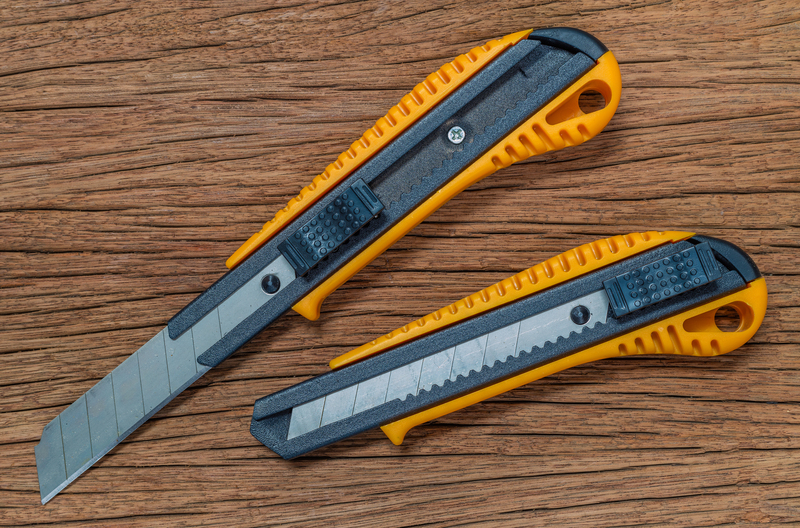Why DIY Piano Moving Is Tempting but Rarely a Good Idea
Introduction: The Allure of DIY Piano Moving
Moving a piano from one location to another is a challenging task that many homeowners and music enthusiasts face at least once. While hiring professional piano movers is the recommended--and safest--approach, do-it-yourself piano moving (also known as DIY piano relocation) is a tempting option for those looking to save money and take matters into their own hands. But is this approach truly worth the risk? In this comprehensive guide, we'll analyze the common motivations behind DIY piano moving, examine the significant risks and hidden costs, and explain why using professional services is almost always the smarter--and safer--choice.

Why Moving Your Own Piano Seems Appealing
For many, the prospect of moving their own piano is attractive for several reasons:
- Cost Savings: Professional piano movers can cost hundreds to thousands of dollars, so doing it yourself seems like a money-saving option.
- Convenience: Immediate action without needing to book ahead or conform to someone else's schedule.
- Sense of Achievement: Successfully transporting such a heavy and delicate instrument can feel like a major accomplishment.
- Minimal Relocation: Moving the piano within the same house--maybe just to another room or floor--can appear straightforward enough to handle on your own.
However, successful self-moving of a piano requires much more than muscle and determination. The unique characteristics and vulnerabilities of pianos make them some of the hardest items to relocate safely.
The Unique Challenges of Moving a Piano
Pianos are not ordinary pieces of furniture. In fact, moving a grand or upright piano involves precise knowledge, specialized equipment, and careful planning. Let's explore the reasons why transporting a piano is a unique--and risky--undertaking:
Weight and Bulkiness
Even upright pianos can weigh up to 500 pounds (227 kg), while grand pianos can easily exceed 1,000 pounds (454 kg). Pianos are top-heavy and awkwardly shaped, making them difficult to grasp, maneuver, or balance. Their sheer size complicates movement through doorways, up staircases, and across uneven ground.
Delicate Construction
Pianos are masterpieces of musical engineering, containing thousands of moving parts. Instruments are sensitive to shocks, tilts, and even small impacts. A single jolt can affect the internal components, causing misalignment or damage that impacts sound quality and playability.
High Financial and Sentimental Value
Pianos often have significant financial value--as well as priceless sentimental worth. Many are family heirlooms passed down through generations, and rare models can be practically irreplaceable. Any attempt at DIY piano moving runs the risk of irreparable harm.
Potential for Personal Injury
Back strains, finger crushes, and foot injuries are common in attempts to move heavy loads. The risk increases exponentially with a piano's unpredictable weight balance and awkward grip points. Attempting to move a piano without the proper training or team can put you and your helpers in danger.
The Hidden Costs of DIY Piano Moving
While the temptation to save money is a major motivation, moving a piano on your own often incurs unexpected expenses:
- Equipment Rental: You'll need piano dollies, moving straps, heavy-duty padding, ramps, and possibly a truck with a liftgate.
- Property Damage: Repairing scratched floors, gouged walls, or broken stairs can end up costing far more than hiring professionals.
- Piano Repair: Fixing or retuning a damaged instrument is expensive and may not restore original tonal quality.
- Medical Bills: Even minor injuries can result in lost work days and healthcare costs.
By the time you add up these potential hidden costs of moving a piano yourself, professional movers start to look like the more economical choice.
Common Accidents and Mistakes During DIY Piano Moves
Hundreds of stories circulate about DIY piano moving disasters. Here are a few of the most common mishaps:
- Instrument Tipping Over: The high center of gravity makes pianos easy to tip; this can cause extensive damage to legs, pedals, and internal action.
- Underestimating Doorways and Stairs: Many moves are derailed when the piano won't fit, causing last-minute scrapes or worse, stuck furniture.
- Improper Lifting or Pivoting: Lifting without technique can lead to back, shoulder, or hand injuries.
- Lack of Padding: Skipping proper wrapping can result in body scratches and key cover cracks.
- Inadequate Team Size: Many underestimate the need for at least 4-6 strong adults to move a large piano safely.
Expertise and Equipment: The Professional Difference
When you hire professional piano movers, you get more than just muscle. You benefit from a team with specialized skills, training, and the right tools for the job. Here's what sets the pros apart:
Skillful Packing and Wrapping
Professional movers know how to wrap and cushion every surface of the piano using heavy-duty blankets and special straps, preventing scratches and cracks. They also know which parts (such as music stands and legs) should be removed and reattached.
Specialized Moving Equipment
Professionals use piano boards, skid boards, hydraulic lifts, and dollies engineered specifically for different types of pianos--from spinets to concert grands. These tools allow for safe movement across all surfaces and staircases with minimal risk.
Team Coordination
A professional moving crew operates with coordinated signals, teamwork, and careful timing. Their experience helps prevent accidents and ensures the piano remains stable and upright at every stage.
Insurance Protection
Most reputable piano moving companies offer insurance in case of rare accidents or damage. This peace of mind is priceless compared to the risk of DIY.
Risks to Your Piano's Sound and Functionality
Even when moved carefully, pianos can go out of tune or suffer from climate-induced damage, but improper moving techniques dramatically increase risks. Here's what could happen if you're not careful:
- Soundboard Cracks: Stress on the piano's frame can cause fractures or splits in the wooden soundboard, permanently altering tone and resonance.
- Broken Strings and Hammers: Sudden movements or bumps can snap strings, break hammers, or misalign the intricate action mechanism inside.
- Pedal Malfunctions: Crushed or bent pedals require costly repairs and may never function the same way again.
- Out-of-Tune Notes: Even small shifts can cause the tension on strings to change, requiring a full tuning session afterward.
It's no exaggeration to say that moving a piano incorrectly can ruin both its function and its value.
Protecting Your Home and Your Health
Not only is your piano at risk, but your home--and your well-being--is, too. Here's what amateur piano movers often face:
- Scratches and Dents: Tight corners, narrow hallways, and delicate flooring are easily damaged during poorly managed moves.
- Doorway and Staircase Damage: Banging a piano against door frames, banisters, or walls can leave lasting marks.
- Physical Strain: Hernias, sprains, and severe back injuries are common when improper lifting techniques are used.
- Tripping Hazards: Inadequate planning can result in tripping over straps, cords, or the instrument itself, compounding risk.
The bottom line: The risks you assume by attempting DIY piano moving extend well beyond just the instrument itself.
What Professional Piano Movers Actually Do
The services offered by dedicated piano moving experts go far beyond lifting heavy objects. Here is a rundown of the process:
- Site Assessment: Evaluating access points and identifying challenges before the move begins.
- Preparation: Wrapping the piano, removing detachable parts for safer transport, and protecting the floors and pathways.
- Team Strategy: Assigning each team member a role and rehearsing movements, especially over stairs or through narrow spaces.
- Use of Professional Equipment: Employing customized dollies, board lifts, ramps, and hoists designed specifically for piano sizes and weights.
- Secure Loading and Unloading: Utilizing liftgates and tie-downs to stabilize the piano inside the transport vehicle.
- Reassembly and Placement: Carefully reconstructing any disassembled parts and situating the instrument exactly where the client wants it.
- Post-Move Inspection: Checking for any new scratches, misalignments, or tuning issues, and advising on any follow-up care needed.
This level of thoroughness and expertise simply cannot be matched by a DIY approach.
Frequently Asked Questions About Moving Pianos
Can I move a piano by myself with friends?
*Technically, it's possible--but it's rarely advisable.* Pianos are extremely heavy and awkward. Without professional experience, you risk injury to people and damage to the instrument.
How much does professional piano moving cost?
Costs range greatly depending on distance, access, and piano size but usually fall between $200 and $1,000. Compare this to potential repair costs or medical bills after a DIY mishap.
Can I use regular movers or moving trucks?
Regular movers may lack the specialty tools and training required for safe piano transport. Always ask about their experience and equipment for handling pianos specifically.
Can I move a piano upstairs or downstairs myself?
*Attempting stairs with a piano is extremely dangerous* without the right team and gear. Leave this to professionals at all costs.

Tips for Those Still Considering the DIY Route
If you're still intent on moving your piano without professionals, consider these tips to minimize risk (but know that there's always a gamble):
- Gather a Team: Recruit at least four strong, able-bodied adults who understand the risks.
- Rent the Right Equipment: Use piano dollies, heavy-duty straps, and moving blankets--never attempt a move with bare hands only.
- Map Your Route: Measure all doorways, stairs, and paths in advance. Remove obstacles and protect corners with padding.
- Prepare the piano: Lock the keyboard lid, tape parts securely, and (if possible) remove legs and pedals for grands.
- Lift Correctly: Use your legs, not your back, and move slowly with coordinated communication at all times.
- Consider Insurance: Your homeowners' policy may not cover DIY accidents--another reason to think twice!
Remember, despite all precautions, there's always a significant risk to both your instrument and the people involved.
Conclusion: The Safe, Smart Way to Move Your Piano
Moving a piano yourself might seem like a cost-effective solution, but the risks almost always outweigh the rewards. The heavy weight, delicate mechanics, and sentimental value of pianos make them an extreme challenge for even the handiest of DIYers. One wrong move can turn a priceless family treasure into a costly disaster--or worse, cause life-altering injury.
Investing in professional piano moving services brings not only peace of mind and protection for your instrument but also safeguards your home and your health. If you cherish your piano--and your safety--trust the experts. In the end, it's an investment both wise and well worth it.
For those facing an upcoming move: resist the temptation of DIY piano moving, and let the pros handle your prized instrument with the care and expertise it truly deserves.



